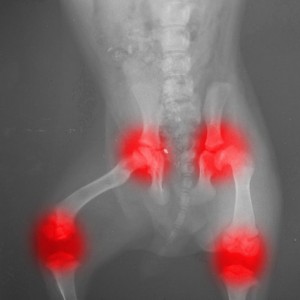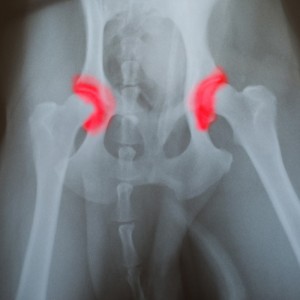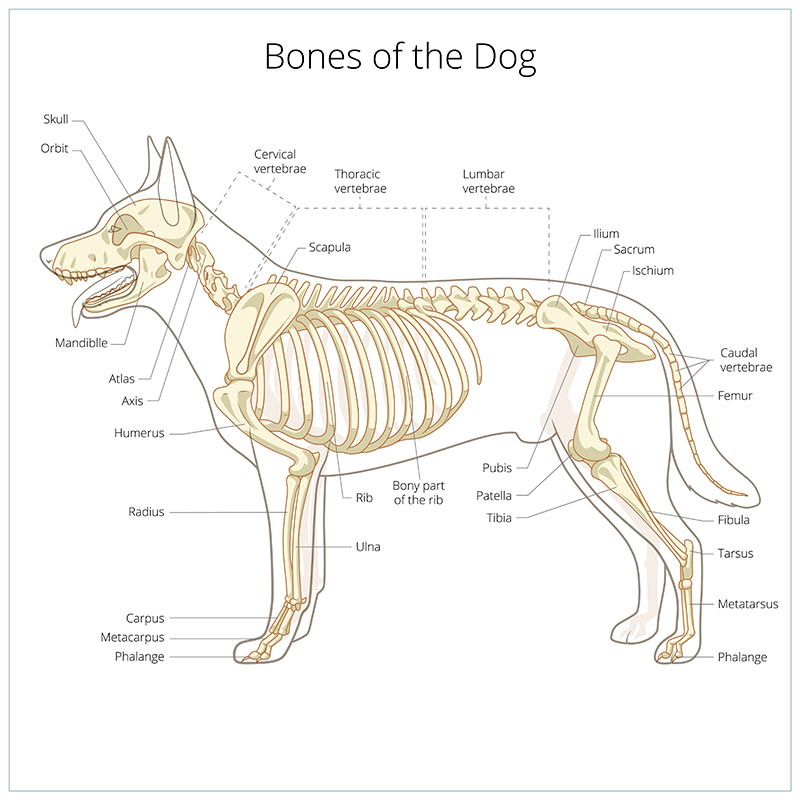Understanding your dog’s hip surgery
Hip surgery is the treatment of choice for many hip conditions in dogs. Your dog’s hip surgery is most likely required to address hip dysplasia, a common hereditary condition affecting many breeds, and particularly the larger breeds.
Hip dysplasia means that the hip joint has not developed properly, leading over time to impeded movement and significant pain. However, not all dogs with hip dysplasia will require hip surgery; several more conservative treatment options are also available.
If hip surgery is the treatment of choice for your dog, there are three surgical techniques that are most commonly used. Which of these is used will depend on individual circumstances such as dog’s health, age and size and the owner’s financial constraints.
Femoral Head Ostectomy entails removing the top part of the femur (hip bone), leaving an empty socket. Eventually, scar tissue forms a ‘false joint’. This type of surgery is usually performed on small dogs whose weight can be supported by the false joint. It provides significant pain relief and is a more affordable option than the other techniques, but may leave the dog with a limp or gait abnormality.
Triple Pelvic Osteotomy entails cutting the pelvic bone in three places and rotating the segments of bone to create a more aligned hip socket. This type of surgery is usually performed on young dogs that do not yet show major signs of hip dysplasia. Although expensive and painful, TPO can successfully restore full function to the hip joint for the long-term.
Total Hip Replacement entails removing the entire hip joint and replacing it with an implant (a false hip constructed of plastic and/or metal). This type of surgery is usually performed on fully grown dogs with severe hip degeneration but in otherwise good health. While a costly and invasive procedure, it is highly successful in restoring a more normal hip motion and eliminating pain and discomfort.
Continue reading to learn more about when hip surgery is needed, the three major types of hip surgerys, their success rates and recovery period, the breeds most likely to require hip surgery and if hip surgery is covered by pet insurance.
Unsure how serious it is?
Bow Wow Meow policyholders can get access to trusted vet care anytime, anywhere, at no additional cost. Connect to an experienced Australian registered vet via video call, 24/7. Whether it’s providing vet advice, setting up at-home treatment plans, or confirming if you need to visit a vet in person, you can get help when you need it.
Find out more about our pet insurance cover options.
Understanding your dog’s hip surgery
Most dog owners are understandably concerned if their beloved pet has a serious hip condition for which surgery is the best, or only, treatment. Obviously, the diagnosis of hip dysplasia in dogs is an enormous worry, which is compounded by the potentially huge cost of hip dysplasia surgery and particularly dog hip replacements.
To fully understand the need for your dog’s hip surgery, it is important to first understand the anatomy of the hip. Basically, the hip is a ball and socket joint: the ball is at the top of the thigh bone (femur), and the socket (acetabulum) is in the pelvis. A well-functioning hip joint has a deep socket (ideally sufficiently deep to hold two-thirds of the head of the femur), a good fit of the ball (the femoral head), a good angle of the neck of the femur and tight ligaments holding these in place.
The second thing owners need to understand is hip dysplasia in dogs, because this condition is a very common underlying reason for dog hip replacements and other hip surgeries. Hip dysplasia is, by definition, an ill-fitting hip. The various factors that combine to create an ill-fitting, unstable hip are:
- A shallow hip socket (the acetabulum)
- An ill-fitting head of the femur (head too small, femoral neck too short and steep)
- Excessive looseness of the ligaments
In dogs with hip dysplasia, the ball and socket usually do not fit or develop properly, and they rub and grind instead of sliding smoothly. This results in deterioration over time and an eventual loss of function of the joint itself. Because of the altered biomechanics of the hip joint, osteoarthritis develops early, causing significant pain and disability.
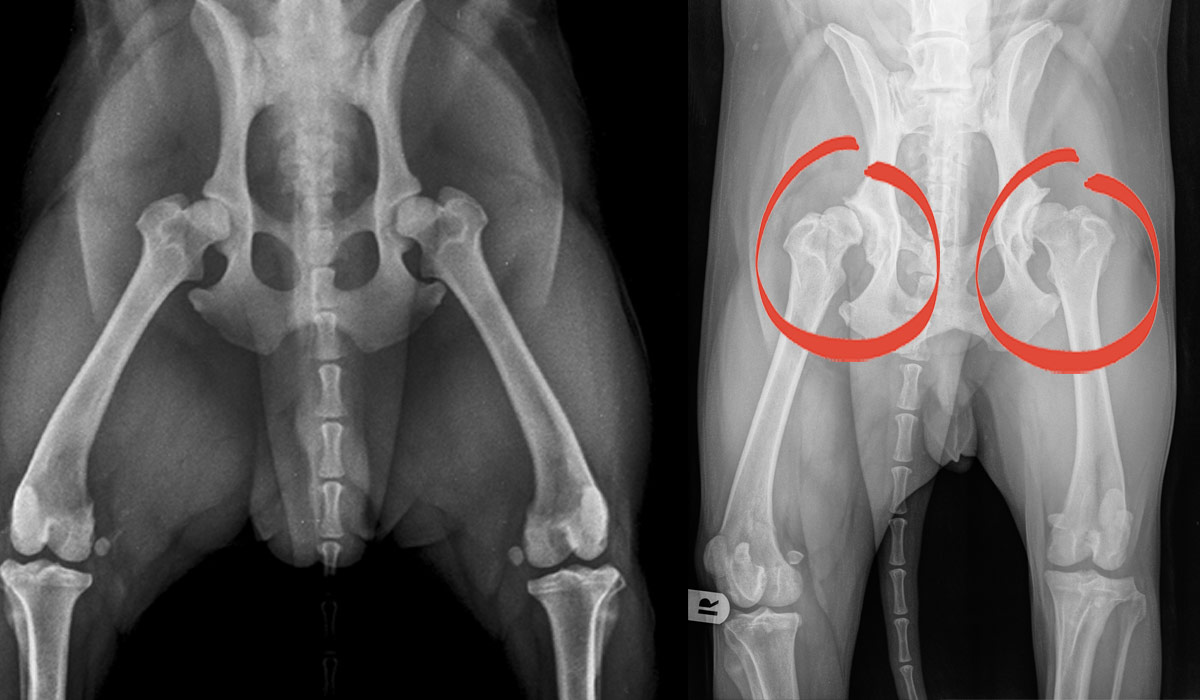
Left showing normal and healthy looking hip. Left showing hip with severe hip dysplasia (circled in red)
Several factors lead to the development of hip dysplasia in dogs, starting with genetics. It is a hereditary condition that occurs in many dog breeds, but particularly in large or giant breed dogs, beginning in dogs as they grow. Commonly searched terms by concerned dog owners include:
- German Shepherd hip dysplasia
- Labrador hip dysplasia
- Border Collie hip dysplasia
- Golden Retriever hip dysplasia
- Rottweiler hip dysplasia
Factors such as excessive growth rate, certain types of exercise, rapid weight gain and improper nutrition also play a role in the development of hip dysplasia in dogs as they can increase the load on the hip joint and result in further deterioration, pain and disfunction.
However, hip dysplasia is not the only possible reason for dog hip replacements and other hip surgeries. Other possible causes of dog hip surgery include:
- Fractures of the hip, e.g. if the dog is hit by a car, a hard object, or falls from a height.
- Recurrent hip luxation (dislocation) and subluxation (partial dislocation).
- Severe degenerative joint disease or advanced osteoarthritis of the hip.
- Legg-Perthes disease (also known as avascular necrosis of the femoral head).
When is hip surgery needed?
A definitive diagnosis of a hip disorder such as a fracture or hip dysplasia in dogs usually comes with a radiograph (X-ray) of the dog’s hips to determine the degree and severity of the problem, which will help determine the best course of treatment for the dog.
There are quite a few hip dysplasia dog treatments, ranging from lifestyle modifications to surgery. If the condition is not severe, or if the dog is not a candidate for surgery for medical or financial reasons, the veterinarian may recommend a conservative (nonsurgical) approach. The choice of treatment will take into account the age, condition and lifestyle of the dog, the severity of the symptoms, the physical and radiographic findings and the economic situation of the owner.
Surgical intervention is indicated where conservative treatment is not effective, where athletic performance is desired, or in young animals where owners wish to slow the progression of degenerative joint disease and increase the likelihood of good long-term limb function.
If the dog is a good candidate for surgery, there are several surgical procedures available and the veterinarian will provide the best recommendations for each individual animal. the most common surgeries used to treat hip conditions including hip dysplasia in dogs are:
- Total Hip Replacement (THR, dog hip replacement, total hip replacement dog)
- Triple Pelvic Osteotomy (TPO hip dysplasia surgery dog)
- Femoral Head Ostectomy (FHO surgery dog)
Is hip surgery covered by pet insurance?
Bow Wow Meow Pet Insurance includes cover for hip surgery, subject to applicable waiting periods, annual benefit limits and as long as it is not a pre-existing condition. Refer to the PDS for full terms and conditions.
What is Femoral Head Ostectomy and what is involved?
FHO surgery, performed under general anaesthesia, involves removing the femoral neck and head, or “ball,” of the hip joint, leaving just an empty socket. The muscles of the leg initially hold the femur in place, and, over time, scar tissue forms between the socket and the femur to provide cushioning that is referred to as a ‘false joint’.
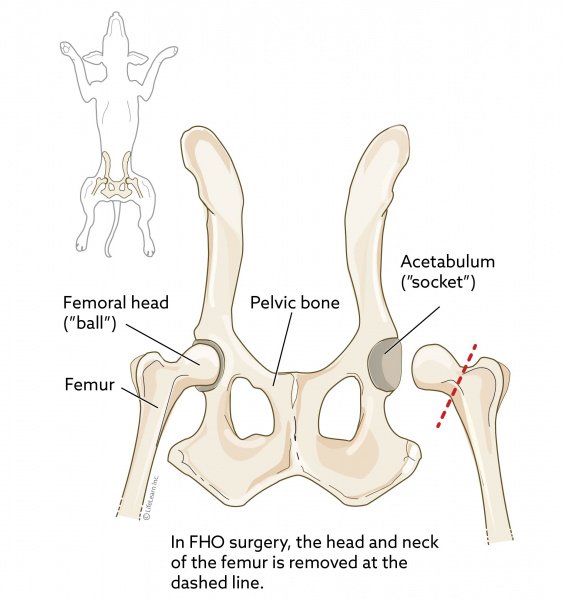
(Source: https://vcahospitals.com/know-your-pet/femoral-head-ostectomy-fho-in-dogs)
The primary goal of FHO is to remove bone-on-bone contact, thereby preventing painful rubbing in the joint and restoring pain-free mobility. While this procedure does not recreate a normal hip joint or normal hip function – the joint’s original range of motion and stability isn’t fully corrected – it reduces the discomfort associated with a diseased or damaged hip and can be a successful pain management strategy.
FHO is a hip dysplasia dog treatment that can be performed on young and mature dogs and is primarily recommended for small dogs (under approximately 23kg), especially those who are at a healthy weight. The false joint that is created can support the weight of small animals but may be less effective in large-breed dogs.
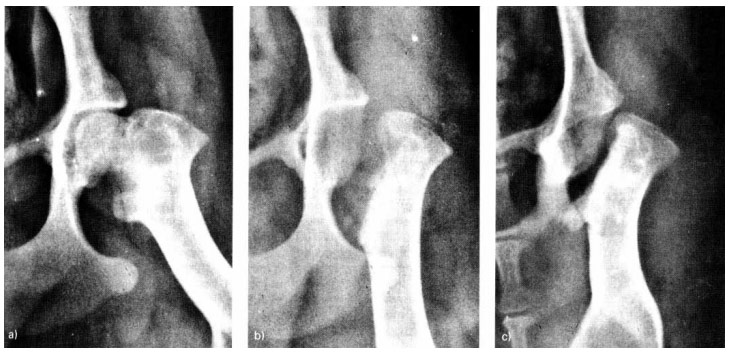
Source: https://www.orthovet.org/files/vcot_2010-23-5_13649_0.pdf
There are exceptions, however, and veterinarians may sometimes recommend an FHO for a heavier dog with severe arthritis, a luxating hip, or if the expense of the other procedures is unaffordable. It may also be used as a last resort or salvage procedure in dogs with severe hip dysplasia that are not candidates for a total hip replacement.
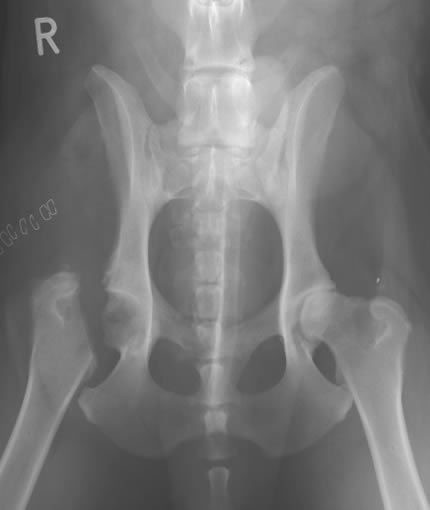
Source: http://www.pkamc.com/services/surgery/femoral-head-osteotomy-fho/
What is a Triple Pelvic Osteotomy and what is involved?
TPO is a hip dysplasia surgery that is usually performed on young dogs less than 10 months old that have been diagnosed with hip dysplasia before major signs are present; i.e. where the pelvis has not yet finished growing, hip laxity is not too severe and there are no arthritic changes in the joint visible on the radiograph.
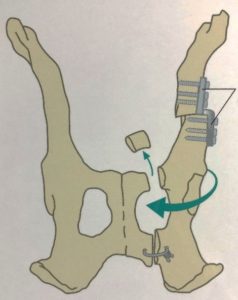
Source: https://swvetsurgery.com/procedures/orthopedic-surgery/triple-pelvic-osteotomy/
In TPO surgery, the pelvic bone (socket) is cut in three places around the hip joint and the segments of bone are rotated to create better alignment with the femoral head (the ball). It is then reattached so that the joint functions more normally, without looseness and pain.
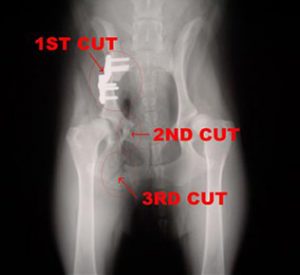
Source: https://vrc-nova.com/surgery/procedures/triple-pelvic-osteotomy-tpo-hip-dysplasia/
TPO is an expensive and painful procedure, however, it is one of the most recommended surgeries for younger dogs because it restores full function to the hip joints. Recent advancements in implant (locking plates and screws) technology now allow similar results with only two cuts made in the bone (Double Pelvic Osteotomy), a less invasive procedure.
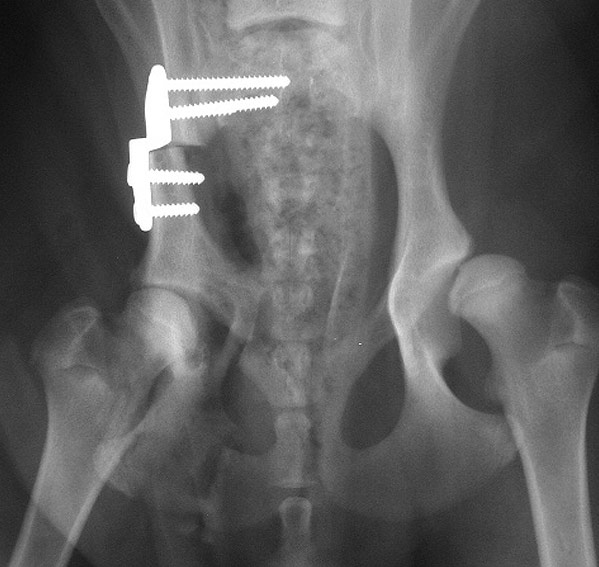
Source: https://www.ndsr.co.uk/specialist-referral-service/pet-health-information/orthopaedic-surgery/hip-dysplasia
What is Total Hip Replacement and what is involved?
Total Hip Replacement is considered the gold standard for surgical treatment of hip dysplasia in dogs. It is a very specialised procedure and should only be performed by experienced orthopaedic veterinary surgeons.
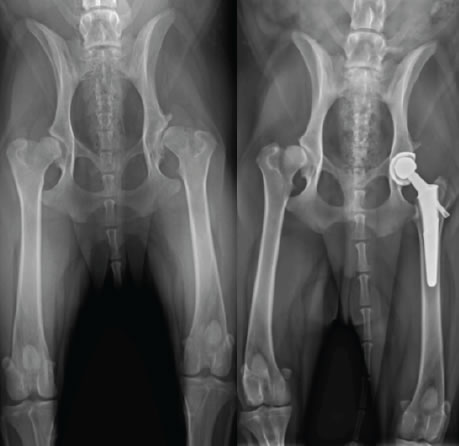
Source: http://vhc.missouri.edu/small-animal-hospital/surgery/canine-total-hip-replacement/
Total dog hip replacement surgery removes and replaces entire hip joint with metal and plastic implants. Most dog hip replacement prostheses have a metal ball at the top of the femur that fits into a dense plastic and/or stainless-steel socket. These may be held in place using special bone cement, or they may be ‘cementless’ implants.
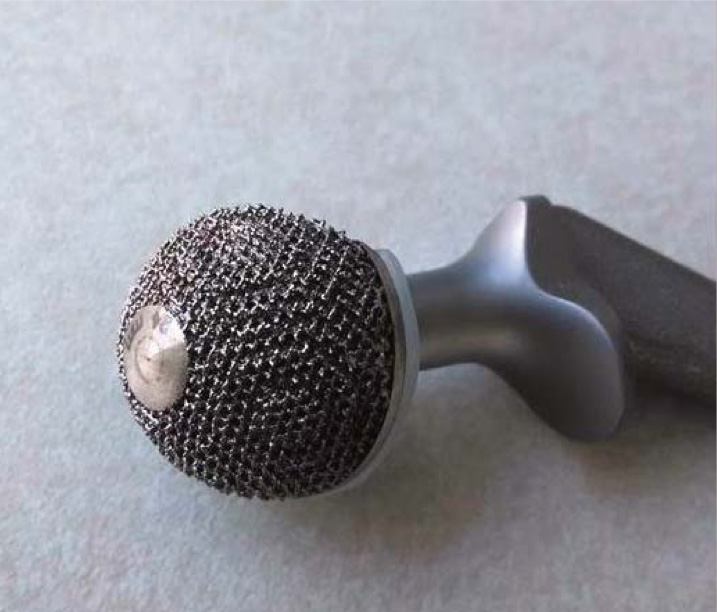
Source: http://blog.vetbloom.com/surgery/total-hip-replacement/
Dog hip replacement cost is high, and surgeons typically perform this procedure on fully grown dogs that show signs of severe joint degeneration and who have not responded to other forms of treatment. They also need to be in good overall health with no other bone disease, nerve disease, or other serious medical conditions.
THR surgery is the most invasive option currently available. However, it returns hip function to a more normal range of motion and eliminates most of the discomfort associated with hip dysplasia, providing many years of pain-free use of the hips.
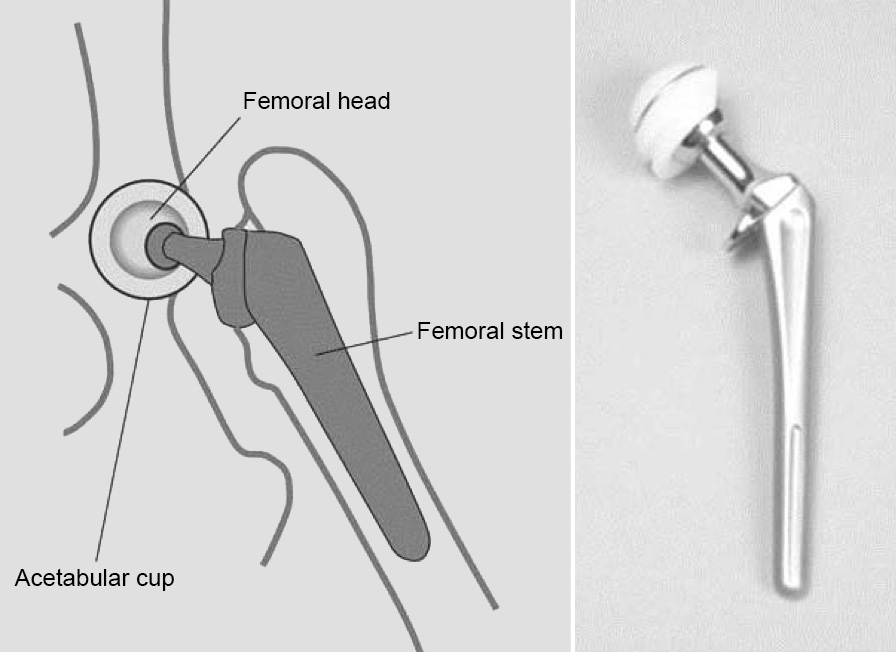
Source: http://blog.vetbloom.com/surgery/total-hip-replacement/
What is the recovery period for hip surgery?
Total Hip Replacement (THR dog hip surgery recovery)
The recovery time for a dog hip replacement can range from 8 to 12 weeks, although generally a 12-week recovery period is recommended. Restricted activity and careful rehabilitation are necessary to ensure proper healing. Crucial elements of home management during this time include pain control, joint supplements and low-impact controlled exercises to build up the hind leg muscles.
After the initial 12 weeks, returning to pre-surgery activity immediately is not recommended – controlled exercises that progressively increase will give your dog the best chance at a successful recovery.
Since only one hip can be operated on at a time, there is usually a 3-6-month gap between hip surgeries for the patient to recover and build enough muscle to support the other side post-surgery. Sometimes, the second surgery is then not needed, but a re-evaluation is necessary.
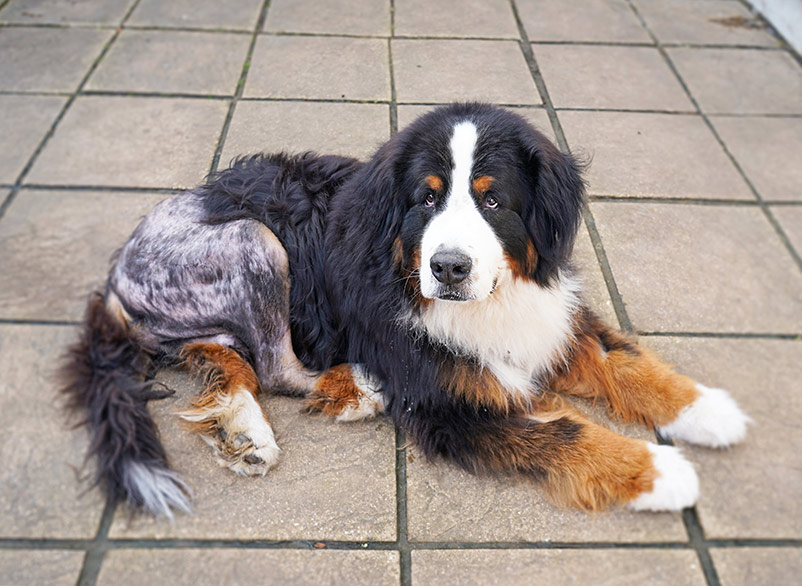
Triple Pelvic Osteotomy (TPO hip dysplasia surgery dog)
Restricted activity and careful rehabilitation are necessary to ensure proper healing. After being released from the hospital it is critical to ensure that the dog leaves the incision alone to prevent infection and speed healing. Pain control is also important to get healing off to a good start.
Stitches or staples will be removed after 10 to 14 days.
Physical rehabilitation with a canine rehabilitation practitioner should begin shortly after surgery. He or she will guide you to gradually increase your dog’s activities as healing progresses. Most dogs are ready for full activity within 3 months.
Femoral Head Ostectomy (FHO surgery dog)
Most dogs will show signs of complete recovery within approximately six weeks and at this time, can resume their regular activities. Healing may be faster in dogs that had normal function up until shortly before the surgery (e.g., in the case of a sudden, traumatic injury to the hip) and may be slower in dogs with ongoing, chronic problems (because muscle atrophy may have set in).
According to Michigan State University, dogs having FHO surgery will usually toe-touch in around 10 to 14 days and partially bearing weight in 3 weeks. Usually they are actively using the limb in one month, but it can take up to 6 months before complete using healing and function are evident.
What is the success rate of hip surgery?
The prognosis for surgery for hip dysplasia in dogs is highly variable and depends on many factors, including the overall health and environment of the animal. In general, if surgery is indicated and performed correctly, it is beneficial. If the condition is identified early enough – before osteoarthritis sets in and/or before muscle loss results from reduced mobility – several surgical options are available.
Total Hip Replacement (THR – total hip replacement dog)
This procedure maintains a high rate of success, with approximately 90 – 95% of dogs who have a total hip replacement attaining excellent improvement in limb function and a near-normal range of motion. Most dogs have a significant improvement in quality of life and pain relief. After the recovery period most dogs can resume normal activities including running, jumping, playing, or hunting.
Dogs that have had a total hip replacement compensate well by shifting their weight to the operated limb. Because of this, 80% of dogs receiving a total hip replacement do not need to have a total hip replacement performed in the opposite hip, even if it has significant arthritic changes.
Complications of the procedure are rare but can include hip dislocation, nerve injury, femur fracture, loosening of the implants over time, or infection requiring implant removal and/or revision.
Triple Pelvic Osteotomy (TPO hip dysplasia dog treatment)
TPO has been used successfully to treat hip dysplasia in dogs for decades and reports of long-term function are generally good to excellent. Recent advancements in implant technology now allow similar results with only two cuts made in the bone – a Double Pelvic Osteotomy – a less invasive procedure.
Reported complications after DPO and TPO include screw loosening, change in limb range of motion, and pelvic canal narrowing. However, the incidence of complications is low.
Femoral Head Ostectomy (FHO surgery dog)
The success rate varies depending on the size of the dog and physical rehabilitation post-surgery. Most small dogs do very well following surgery but the heavier the dog, the harder it is to predict the outcome. Larger dogs can do well, but because of their increased weight, they may display weakness or stiffness in the affected leg.
Active dogs often experience better results with FHO than less-active dogs because inactive dogs have less muscle mass around the joint, making the joint less stable post-operatively and leading to longer recovery times. Many dogs undergoing this procedure will be left with a limp or gait abnormality but pain relief is usually satisfactory to improve the quality of life. Physical therapy (for e.g. hydrotherapy and physiotherapy) and controlled exercise can help maximise limb function and stabilise the joint.
What is the cost of hip surgery for dogs?
The cost of treatment for hip dysplasia in dogs depends on the type of surgery that is undertaken. Additionally, the cost of a particular surgical method can vary significantly, depending on where you live, as well as the hospital in which the surgery is performed.
Total hip replacement dog surgery is typically the costliest option, while FHO surgery is more affordable and should be seriously considered if there are financial constraints.
Which dog breeds are most likely to need hip surgery?
Hip dysplasia in dogs is hereditary and is especially common in medium to large pure-bred dogs, but it also occurs in some smaller breeds such as spaniels and pugs, as well as many crossbreeds and ‘designer’ breeds. Many of the breeds that are most susceptible to hip dysplasia are the same breeds most likely to need dog hip surgery.
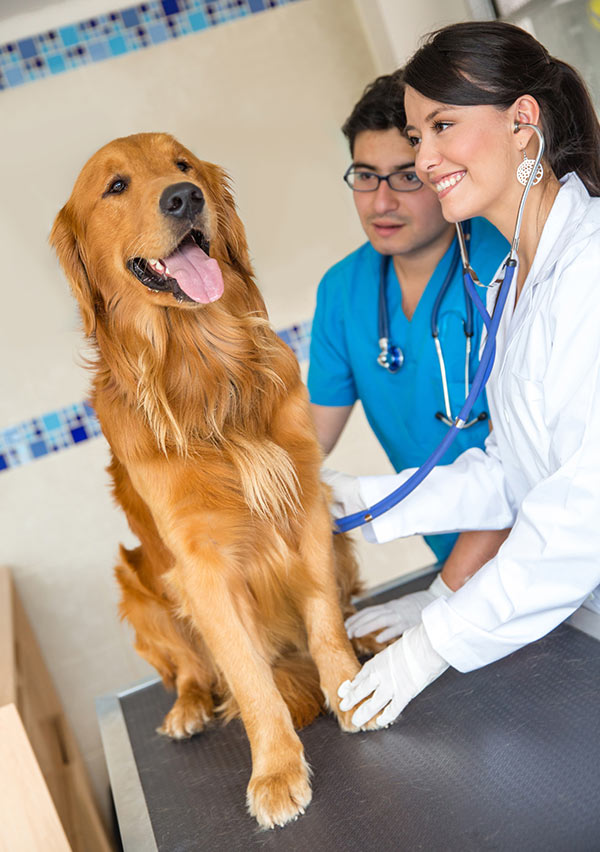
Currently in Australia, the breeds most likely to require dog hip replacement or other hip surgery include:
- Golden Retriever
- Rottweiler
- Border Collie
- Labradoodle
- Labrador (Labrador Retriever) and Labrador Cross
- Cavalier King Charles Spaniel
- German Shepherd
- Golden Doodle (Groodle)
- Spoodle
- Cavoodle
- Mastiff
- Dogue de Bordeaux
- Beagle Cross
- Australian Cattle Dog Cross
- Cocker Spaniel
- Kelpie Cross
In summary
Hip dysplasia in dogs is often a painful and debilitating condition, with surgery providing the best, or only, option for significant improvement in quality of life. Make sure you are fully informed of the treatment options available and the pros and cons of each of these, given your dog’s specific circumstances. Always contact your veterinarian if you have any questions or concerns.
Bow Wow Meow Pet Insurance can help protect you and your dog should an unexpected trip to the vet occur.
-
Find out more about our dog insurance options
-
Get an instant online pet insurance quote









